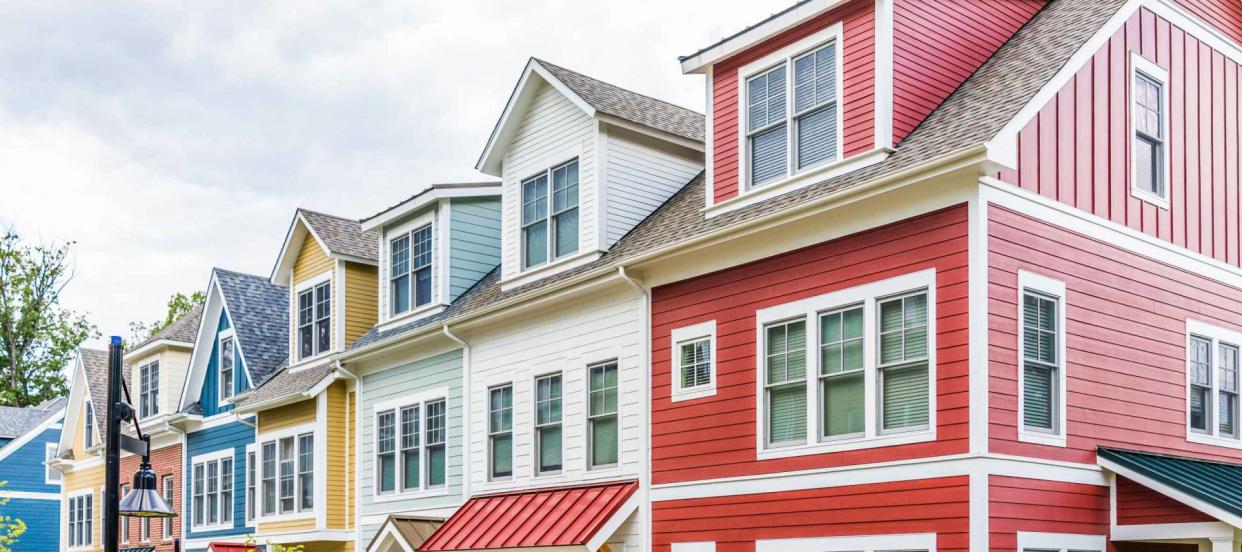To score a 30-year mortgage below 3%, do these 4 things

The economic chaos caused by the coronavirus has pushed mortgage rates to lows that a time traveler from 2019 would never believe. The average for a 30-year fixed-rate home loan — America's most popular type of mortgage — has dropped below 3% for the first time in history.
Thirty-year fixed mortgages promise steady, affordable monthly payments with no surprises. The loan is a particularly good choice for homebuyers who think they may settle in their houses for a while.
Even during a time of all-time low mortgage rates, you can't assume you'll always be offered the lowest rate possible. Lenders have tightened their standards because of today's high unemployment and uncertain economy, so you'll need a strategy.
And here it is: four tips for reeling in a 30-year home loan at a rate under 3%.
1. Comparison shop 'til you drop

Cast a wide net to find a good rate.
Different lenders can offer the same borrower vastly different mortgage rates. To find your best deal, it's essential to shop around and compare rates and not stop your search at the very first loan you're offered.
A shopper looking for the lowest interest rate has lots of options today. Plenty of websites aggregate national rates and provide up-to-date information on terms and different aspects of mortgage loan offerings.
If you're a member of a credit union through your job, ask to see its current rates. Credit unions typically offer competitive rates, although the application process may be slower and the underwriting guidelines may be stricter.
If you’re not a member of a credit union, find a nonprofit credit union in your area that opens its membership to local residents.
2. Punch up your credit score

If that's you, you'll need to raise it to get a low mortgage rate.
A better credit score brings better mortgage rates. Lenders like borrowers whose credit scores are very good (in the 740-to-799 range) if not exceptional (800 to 850). If you don't know your credit score, it's easy to take a peek at it for free.
If your credit score needs some help, take steps to raise your score:
Pay down debt, especially on credit cards.
Don't open new credit cards, but don't close old ones either. Doing that will reduce your available credit — which could hurt your score.
Get your hands on your credit reports and make sure there are no errors that could be dragging down your credit score. A 2012 study from the Federal Trade Commission found that 20% of U.S. consumers had errors on their credit reports that needed correcting.
3. Put more money on the table

A bigger down payment can get you a lower rate.
Homebuyers who can make larger down payments tend to land lower 30-year mortgage rates.
If you're willing to put more skin in the game, a lender will see you as a better risk and reward you with a better rate. As an added bonus, you won't be forced to buy private mortgage insurance, or PMI, if you can make a down payment of at least 20% of your home's purchase price.
Don't have that kind of cash? If you're a first-time homebuyer, down payment assistance may be available in the form of a government grant or low-interest loan.
Private mortgage insurance offers a lender protection in case a borrower defaults, and it's not to be confused with homeowners insurance — which offers you protection if your home is damaged by fires, tornadoes and most other types of disasters. You can easily find and compare multiple home insurance offers in minutes.
4. Be willing to pay 'points'

The fees known as 'points' can lower your mortgage rate.
The fees known as "discount points" are another type of upfront payment that can help you bag a sub-3% mortgage rate. One point equals 1% of your loan amount and can lower your rate by as much as one-quarter of 1 percentage point — say from 3.2% down to 2.95%.
"By paying points, you pay more upfront, but you receive a lower interest rate and therefore pay less over time," says the U.S. Consumer Financial Protection Bureau. "Points can be a good choice for someone who knows they will keep the loan for a long time."
But the CFPB says lenders have their own individual pricing structures, so you can't make the assumption that a loan with points will always have the lowest rate out there. You might find that another lender offers a loan with zero points and a better rate.
It's another good reason to gather multiple loan offers and review them side by side, so you can feel confident you're getting the cheapest mortgage that's available to you.

